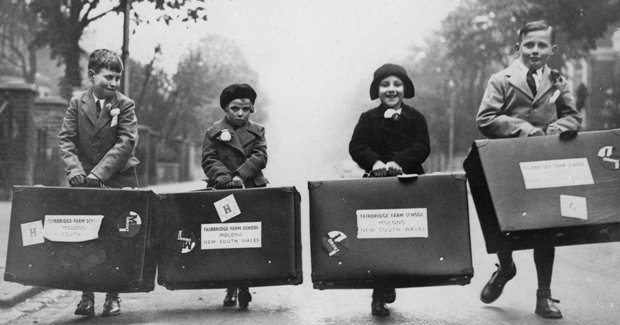Australia’s forgotten child migrants

Over a century, more than 100,000 British children were sent overseas by charitable and religious organisations with government approval to populate the colonies and improve the children’s lives. Yet the reality for these children was often quite different. Their stories are the focus of a new exhibition at the Australian National Maritime Museum in Sydney.
The child migration program, which began in the 1860s and continued for a century, saw children taken from their homes or children’s institutions and sent to Commonwealth countries including Canada, New Zealand and Zimbabwe. The organised migration was designed to alleviate social disadvantage in Britain and to safeguard the European population and identity of these colonies.
“The scheme did have good intentions, but you can see there were problems from the outset,” says Kim Tao, the exhibition’s curator. “They wanted to remove children from poverty, but there was also an element of empire building.”
Mixed outcomes
About 7,000 child migrants – some as young as three years old – were brought to Australia by the Fairbridge Society and Barnardo’s with the support and approval of the Australian Government. Upon arrival, they were sent to remote farm schools or religious institutions, where they received limited education and were subject to hard work and harsh discipline.
While Kim says some child migrants succeeded in forging successful lives in a new country – such as ex-ABC boss David Hill, and also former federal Senator Andrew Murray, who was sent as a child migrant to Zimbabwe – others suffered physical, emotional and sexual abuse at the hands of carers that cast shadows across their adult lives.
“[Abuse] seems to have been widespread,” says Kim, who cautions that child migrants with positive experiences are less likely to have spoken publicly. “It was an issue of powerlessness.”
Kim says the exhibition – a collaboration between the Australian National Maritime Museum and National Museums Liverpool, UK – “uses the metaphor of a journey” to tell the stories of a number of children sent abroad. One of those migrants, Stewart Lee, was sent to a Fairbridge Society institution in Molong, near Orange in NSW, with his three brothers at the age of four. He says he was removed from his parents by child welfare authorities and placed on a boat bound for Australia, where he arrived on 15 March 1955.
“We were told we were having a big long holiday and we’d be going back,” Stewart told Australian Geographic. He says he was dressed in “a nice, neat little suit” for the voyage, but this was taken off him upon arrival. “The day we got there they were stripped off us and we were given old hand-me-downs,” he says.
Stewart describes his 13 years at Molong as “extremely traumatic” in which he experienced “all sorts of abuses,” and says he was provided with minimal education but expected to do a normal day’s work. It is an experience that continues to affect the 60 year-old, he say. “You can’t get over it.”
Formal apology
A 1956 fact-finding trip by British authorities described the conditions encountered in Australian institutions as unsatisfactory, and changing attitudes to child welfare ultimately led to the end of the program. The last party of child migrants arrived in Australia by air in 1967 and the institutions housing them began closing their doors in the 1970s.
In 2009 the Australian Government recognised the impact child migration and subsequent abuse had on these young lives when it issued a formal apology for its role in the scheme, followed by the British Government earlier this year. However, Kim says the legacy of the child migration program remains.
“Child migration is a really significant part of Australia’s migration history,” she says.
“On their own – Britain’s child migrants” is on at the Australian National Maritime Museum in Sydney from 10 Nov 2010 – 15 May 2011.

